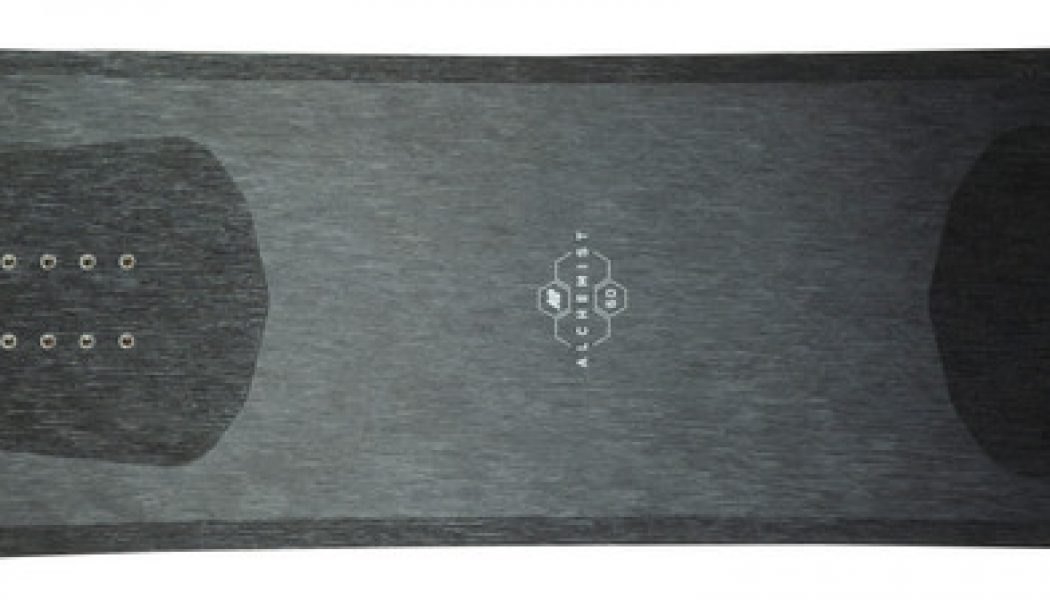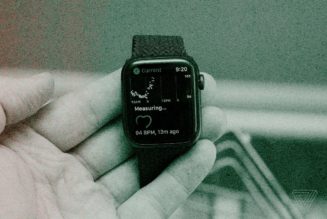It’s amazing how much innovation and technology goes into finding better ways to fall down a mountain. I’m a snowboarding addict. Despite the fact that I absolutely hate being cold, I find myself looking forward to winter with more and more eagerness each fall. I’m also a huge nerd, which means every year I get all giddy about the new advances coming out that improve the ways we play in the snow, or so they claim.
Here, then, is the confluence of those gravitational forces in my life: my picks for the coolest new snow tech. (And take note that, aside from the actual boards, boots, and bindings, a lot of this gear can be used by skiers, too.)
Disclaimer: There are hundreds of brands, boards, boots, kits, and gadgets out there, and I am just one person with finite resources (including time, money, and access to snowy slopes). I test as much gear as I can, but I can’t test everything. My process is this: I do a lot of research to determine what looks most promising, and then I call in the gear I think has the most potential. Generally, all of this stuff is either unisex or available in both men’s and women’s versions. And obviously, like everybody, I have my own riding style, and my own opinions, so your mileage may vary, and I’m sorry if I didn’t test your favorite piece of gear.
Oh, and this should go without saying, but none of this stuff is sponsored. Okay, now let’s get to it.
Snowboards
I managed to get my hands on a bunch of different boards this year, and I was primarily looking for more aggressive boards that accelerate in the steep and deep. These are the ones that stood out.
:no_upscale()/cdn.vox-cdn.com/uploads/chorus_asset/file/19820889/K2SNOW_F20_ALCHEMIST_TOP.png)
Honestly, I can’t fully wrap my mind around this board; it doesn’t feel like anything I’ve ever ridden. K2 cut the wood out of the nose of the board, opting instead for a super light fiberglass (what K2 calls SpaceGlass). Those spots (and the rest of the board) are reinforced with different braids of carbon fiber, which allows it to keep its rigidity. The wood in the middle is a wild-looking, interlaced pattern of bamboo mixed with other woods to give it the response profile they want for free-riding. The result is a very springy nose that bends and flexes over chop and really likes to dance on smooth, groomed runs. The light tip and tail cut down on the rotational weight, so the board goes from edge to edge effortlessly.
I got to test it in some extremely variable conditions, which is really what this board is designed for. The board did extremely well, carving over crust, floating through shin-deep powder, making sharp turns in trees, and holding an edge decently well in icy patches. It feels downright springy, and it really propels you out of turns.
The board is so light it wants to go over chunks rather than bash its way through (unlike the board below), and you’ll want to move your stance back if you’re getting into deeper powder, but I think it would be an excellent choice for those who are transitioning into more off-piste (i.e. outside the ski run) riding. K2 is positioning it as its new free-ride flagship.
:no_upscale()/cdn.vox-cdn.com/uploads/chorus_asset/file/19782048/Jones__1_.png)
In contrast, this board doesn’t play. It is incredibly stiff and built for advanced to expert riders who are looking to conquer the meanest terrain. It’s one of the only boards out there that has a 3D base, meaning the nose and tail are slightly spoon-shaped, giving it more float in powder, and less catchiness. It can handle steep, icy stuff; it blasts through variable snow like a buzzsaw; and it can really jump (and land smoothly). Just know that when you put it on rail, it will take off like a rocket.
On the tech side, the 2020 model uses an ecologically-friendly bio resin, which is a plant-based, recycled, renewable epoxy (instead of the standard petroleum-based stuff) that produces 33 percent less greenhouse gas. The sidewalls and edges are made of recycled materials, and even the stringers (strips of materials that change the board’s flex properties) are made of natural basalt and flax fibers. All that aside, if I’m going to be doing something that scares me, this is the board I will reach for every time.
:no_upscale()/cdn.vox-cdn.com/uploads/chorus_asset/file/19820771/20200214_IMG_20200214_122120.png)
It’s a snowboard made of metal. Like, the whole top-sheet is a single piece of aluminum, polished to a mirror finish. It doesn’t look like something you can actually ride — but you can. Maybe.
Aluminum adds a couple pounds to this board, and the weight is very noticeable, but because it’s such a conductive material it takes vibration and spreads it out over the length of the board, so less of it hits your body. The result is an extremely smooth ride. It’s also so fast it’s scary. The thing just takes off. The result is that it feels like you’re riding a gigantic machete down a slope.
If that sounds like your idea of a good time, then get yourself to Jackson Hole. Mikey Franco of Franco Snowshapes — which makes all-custom boards — has made a couple iterations of this board, and while it isn’t on his website, he will make you one if you really want it, and can afford the $5,000 price. I got to try both current iterations, and they were a lot of fun, though I admit my teeth were clenched the whole time. Franco’s next experiment is a board made of an even more conductive material: copper. Really looking forward to seeing that one.
Safety aids
:no_upscale()/cdn.vox-cdn.com/uploads/chorus_asset/file/19820871/20200229VergeSnow2020_15.png)
This is something that was going to be available this winter, but the pandemic has put it on hold for the time being. That should have eliminated it from this list, but it’s one of the craziest, techiest snow things I’ve ever tested, so we’re letting it ride. It’s a real-life, robotic, pneumatic, computer-controlled, machine-learning exoskeleton for skiing. Yes, really.
It’s marketed toward people recovering from injury, older folks with gradually deteriorating joints, and people who just want to ride for longer without getting tired. Roam claims that it takes up to 20 percent of your body weight off of your knees. I was extremely skeptical, but I got to spend a full day testing it at Big Sky Mountain Resort in Montana. It blew me away.
It looks like a pair of chunky, high-tech knee braces. The braces connect to a small backpack which houses the lithium-ion batteries, the air compressor, and the computer. The whole thing has a suite of sensors that detects your body position in relation to the slope angle, and it responds instantaneously to provide more push where you need it (generally the inside edge of your downhill ski) at exactly the right moment. It has three levels of sensitivity, which you can instantly adjust via remote control. I was worried about the lithium-ion batteries in the cold, but it typically gets around eight hours per charge.
I am not a great skier (steep blues are about all I can handle), but it really helped keep my legs from dying on me. On a couple of particularly steep turns I almost ate it, and I am positive that I would have gone down had I not been getting that extra 20-percent push from the device. I would turn it off in the middle of runs, too, just to make sure it was actually doing something, and the difference was significant. It also added some lateral rigidity to help me from twisting my knees in bad ways. And as you go, the device learns your ski style and continues to adapt to you. By my third run it felt absolutely seamless.
Currently, the software is only designed for skiing, but I talked Roam into letting me try it on a snowboard anyway. I switched it into its most reactive mode, and within one run it was working perfectly. I could power through turns, stay crouched at will, and carve like crazy, but stay nimble enough to zigzag through tight trees. We were all astonished.
The only thing I really didn’t like about it is the noise. The air compressor isn’t exactly quiet, so I didn’t love going through an otherwise idyllic glade only to have constant farty sounds coming out of my backpack.
The Roam Elevate was supposed to be available for direct purchase for $3,500 this winter. Unfortunately, COVID-19 has delayed it indefinitely, along with Roam’s plans to add programs for snowboarding, hiking, running, and general mobility. We’re disappointed that this isn’t a product you can buy right now, but we’re excited that it’s a technology that exists.
:no_upscale()/cdn.vox-cdn.com/uploads/chorus_asset/file/19782061/Flaxta.jpg)
This thing was just introduced in January 2020 and it immediately started cleaning up on design awards. Basically, it’s a low-profile vest with a built-in back protector panel. The panel looks like it’s just a web of small rubber dots with holes in them. The thing is, it’s not just plain rubber, it’s a Nitrile Butadiene Rubber (NBR), which is what’s known as a viscoelastic polymer. Basically, it acts sort of like a non-Newtonian fluid. When worn it bends freely with your back, but when it takes a high-energy impact it deforms and stiffens at the same time, so it both absorbs and spreads out the impact. Because it’s so thin and it breathes so well (due to all the holes in it), my back didn’t get sweaty at all and I completely forgot that I had it on.
Spinal injuries are far too common in snow-sports. If you spend time in the terrain park, in the trees, or around rocks, or if you have a kid who is just learning, this is a cheap insurance policy. (Unfortunately, at the time of writing, there were no women’s sizes available; according to the company, they should be available again soon.)
Bindings and Wax
:no_upscale()/cdn.vox-cdn.com/uploads/chorus_asset/file/19820798/20200229VergeSnow2020_12.jpg)
The special thing here is a refined version of what Now calls Skate Tech, which is designed to make a snowboard turn more like a skateboard. It essentially steals from the design of skate trucks (the mechanism that connects the wheels to the board) and uses leverage to transfer force to the edges of your board more efficiently.
I thought this sounded like marketing hype, but I wanted to try it for myself, and I couldn’t believe it. The first few runs I found myself accidentally overturning the board like crazy and skidding out. It took noticeably less effort to get the board onto its rail, and the result was that, once I got the hang of it, I found I was able to keep my turns quick and sharp even as my legs were getting tired toward the end of the day.
:no_upscale()/cdn.vox-cdn.com/uploads/chorus_asset/file/19820803/20200302VergeSnow2020_16.jpg)
Yes, really, an innovation in wax, and it’s not a small one, either. Nearly all ski waxes are made from petroleum. We may apply it to our skis or boards several times a season. But why do we have to reapply? Because the wax rubs off onto the snow, and when that snow melts in the spring, all of those nasty chemicals go into our rivers, lakes, reservoirs, and oceans. It’s bad.
Mountain Flow is the first plant-based wax in North America. What are the downsides, you ask? There aren’t any, from what I can tell. It comes in all the same temperature-rated hot waxes and rub-on waxes you’d expect, it’s just as fast as petroleum-based wax, and it actually costs less than other premium waxes. Some resorts are starting to make the switch for their rental and demo fleets. This is one of those products that’s greener and better than the alternatives.
Outerwear
:no_upscale()/cdn.vox-cdn.com/uploads/chorus_asset/file/19820805/20200229VergeSnow2020_13.jpg)
We all have feet that are picky in their own ways, but for my money, Ride makes the most comfortable boots I’ve ever worn. The Lasso Pro is a completely new model for the 2020-2021 season.
It’s a stiffer boot (for better response), yet it still remains extremely comfy. It integrates Boa’s brand new H4 dial into Ride’s “Tongue Tied” system, which does a better job of gluing your heel down than anything else on the market, while the H4 Boa offers more granular adjustment and added safety (it will release but not break on a hard impact). The boot also has heat-reflective foil in the footbed to keep your feet toasty. (Note: there are no women’s sizes available; they may be introduced next year.)
:no_upscale()/cdn.vox-cdn.com/uploads/chorus_asset/file/21956748/PXL_20200929_184412660.jpg)
Most shell jackets achieve their waterproofiness through chemical treatments that are applied in the manufacturing process. Not only are these generally pretty nasty for the environment, but they rub off over time and your garment becomes less waterproof. This is Helly Hansen’s first jacket using their patented LIFA Infinity Pro material. It’s a three-layer fabric, woven so that it doesn’t require any additional water-repelling chemicals to keep rain or snow from seeping through. Water beaded off it on a very rainy day, and it was wind-proof, but it still breathed nicely. It isn’t quite as comfy or light as the North Face’s soft Futurelight material, but after just 10 days of mountain testing that jacket had several new vents (read: holes), so it was disqualified. The Odin feels bulletproof by comparison.
:no_upscale()/cdn.vox-cdn.com/uploads/chorus_asset/file/19820811/20200229VergeSnow2020_9.jpg)
How about some NASA-developed tech in a ski jacket? This jacket looks like pretty much any other ribbed, puffy jacket — the difference here is what the puff is made of: Primaloft Cross Core with Aerogel. I have tested several Aerogel jackets over the years; they’ve always been stiff and uncomfortable, and they don’t breathe at all.
This doesn’t have any of those downsides. Rather than using discs made of Aerogel, Primaloft developed a way to integrate it into the fibers, which makes the jacket incredibly warm for the weight, but unlike other Aerogel jackets, you can still ball it up and stuff it in a backpack.
:no_upscale()/cdn.vox-cdn.com/uploads/chorus_asset/file/21955647/20200229VergeSnow2020_8.jpg)
Gloves only keep your hands warm when you have them on. At this point, I won’t use gloves that aren’t touchscreen-compatible and dexterous enough to actually type a message. The Rally Gauntlet gloves are great for that, and they check my other important boxes, such as being warm and waterproof, having a zipper compartment for hand warmers, and having removable liners that are also touchscreen-compatible. I’ve spent years looking for these gloves.
There is no version for women; if you have smaller hands, you can either try the smaller size of the Rally Gauntlet, or look to the women’s version of a style called (unfortunately) Storm Trooper Gloves. They should work as well, though.
Protection
:no_upscale()/cdn.vox-cdn.com/uploads/chorus_asset/file/19782081/Sweet_Protection.jpg)
This helmet has 22 vents which can all be opened and closed by degrees with the twist of a single knob. The ear pads are audio-ready, and the chin buckle snaps together with magnets, making it easy to buckle and unbuckle, even with thick gloves on.
Most important is the safety factor. It has a MIPS (Multi-directional Impact Protection System), which decreases rotational impacts on the brain (a leading cause of brain injury) during crashes, and it has strategically-placed impact panels in the places where your head is most vulnerable to offer additional protection. It’s good-looking, too.
:no_upscale()/cdn.vox-cdn.com/uploads/chorus_asset/file/19820815/20200229VergeSnow2020_7.jpg)
You wouldn’t think something as simple as a face mask would make this list, but this one is rather ingenious. It’s made from a soft merino wool, and the part that covers your mouth and nose is perforated, so the moisture of your breath doesn’t steam up your goggles. The real innovation here, though, is an additional cuff made of windproof Polartec. When it really gets cold (or windy), you can flip it up to protect your mouth and nose. It’s the best face protector I’ve ever used.
:no_upscale()/cdn.vox-cdn.com/uploads/chorus_asset/file/19820817/20200213VergeSnow2020_1.jpg)
These goggles have photochromic lenses, which means they automatically get darker when ambient light increases, and then get lighter when the clouds come out. It’s true that Julbo isn’t the first to have those, by a long shot. What makes these special is the unique venting design. The lens itself pops forward a bit, leaving a gap between the lens and your face where air can flow freely. Why would you want this? Because when your face starts overheating your goggles are going to fog up, and then you can’t see. This gives the lens (and your face) space to breathe.
I wore these while splitboarding and doing some inbound hikes this winter, and they were feeling great, while my friends were pulling their goggles off or switching to sunglasses.
:no_upscale()/cdn.vox-cdn.com/uploads/chorus_asset/file/19820819/00100sPORTRAIT_00100_BURST20200228161546010_COVER.jpg)
If you go to a ski resort this year, you will see a new trend: the goggle sock. Basically, it’s a protective cover you put on your goggles while they’re still on your helmet, so you don’t have to tuck them away or worry about them getting scratched.
These are the best ones I’ve found. Unicorn Picnic managed to get its hands on a big box of goggle covers that were designed for the military, but were just going to be thrown out. They have plenty of padding to protect the lens, but it tucks away in your jacket pocket. An arm on each side clicks to your goggle straps like a snap bracelet, holding them there securely, and they even have an integrated shammy. The cute koala graphic was designed by pro skier Lynsey Dyer, and proceeds go to nonprofits aimed at teaching women and girls of all backgrounds outdoor skills.
If you’re going to drop a couple hundred on your goggles, you should protect them. This batch is a limited run, but if they sell out I was assured that they would make more. You still might want to act quickly.
Audio / Visual
:no_upscale()/cdn.vox-cdn.com/uploads/chorus_asset/file/21956318/smithxaleck.jpg)
Made for helmets that support audio, the Smith x Aleck Wireless Audio Kit is a new product that stands out in a couple of ways. For starters, it actually sounds good! I’ve tried two other brands’ helmet audio systems and they both sounded tinny and terrible. This kit delivers much clearer sound, more prominent bass, and there’s an EQ in the app.
The app is where the other part of the magic lies. Once you set up an account you can create a group with your friends. Not only will it display everybody’s position on a map, but you can use the button on the left headphone to communicate with the group walkie-talkie style. Now, this only works if you (and everybody else) has cellular data, which isn’t always a sure thing at ski resorts. Even without that, it’s worth it for the audio quality and the comfort. It’s definitely going to be my most-used audio communications solution this coming season (especially now that my friends bought some, too).
:no_upscale()/cdn.vox-cdn.com/uploads/chorus_asset/file/19602903/cwelch_200114_3847_0002.jpg)
If you don’t spend tons of time on the slopes, then it can be hard to justify spending 200 bucks for some in-helmet audio. For most people, I say get something that you can use on the hill and on the plane, and just in everyday life. The Jabra Elite 75t are fully wireless Bluetooth earbuds. They’re small, and they each have one large button on the back so I can wear them comfortably under my helmet (which you’ll want to do so they don’t fall out), and click the button right through my ear flap.
The audio quality is excellent, with rich, distinctive tones and tons of bass (and there’s an EQ in Jabra’s app). You get up to 7.5 hours on a single charge, and with the charging case you can get up to 28 hours. Most importantly for skiing and snowboarding, there’s a “Hear Through” function, which uses the built-in mic to play the sounds around you, giving you more situational awareness, which is extremely important for riding around other people (and yes, it works through the helmet, too). Jabra now has an Active version: the Elite Active 75t, which adds waterproofing. I haven’t tested those yet, but if all else is equal, it would be worth going with those.
:no_upscale()/cdn.vox-cdn.com/uploads/chorus_asset/file/19820825/20200302VergeSnow2020_17.jpg)
It used to be that if you were going into the backcountry you really needed three things: a beacon, a shovel, and a probe. These days, many guide outfits are adding a fourth thing to that list: a two-way radio. It’s the fastest and most reliable way to communicate in the backcountry.
The BC Link 2.0 packs a whopping 2 watts of power into its signal, which gives you 6 miles of reliable communication range (depending on line of sight), and it sounds loud and clear. The radio itself stows in your backpack, while the part with the mic, speaker, and volume controls clips to your backpack strap. It’s easy to use, and extremely rugged, offering days of battery life. I’ve even seen people starting to use these around resorts with limited cell signal.
:no_upscale()/cdn.vox-cdn.com/uploads/chorus_asset/file/21958301/20200914Hero9BlackProduct1.jpg)
Skiing and snowboarding are both activities that are made for video, but I’ve always struggled with standard action cameras to really capture the whole picture. The GoPro Max isn’t perfect, but it’s the best camera I’ve ever used for self-capturing snowboarding. You can shoot in 360 degrees, and then play director later on, adjusting the camera angles and zoom, to show your audience what it was really like to be there. The files can still be a pain to deal with, but for capturing as much as possible of your experience, this is the camera to beat.
That being said, if you plan to spend a lot of time filming other people, then the GoPro Hero9 Black would be the better camera because of its 4K capabilities, excellent image stabilization, and ultra smooth slow-motion capabilities. It’s also vastly simpler on the post-production side.
Bags
Now that you’ve got all of this new stuff, you need a way to get it to the slopes.
:no_upscale()/cdn.vox-cdn.com/uploads/chorus_asset/file/19820837/20200229VergeSnow2020_2.jpg)
It’s actually not easy to find a good backpack for skiing or boarding. I’ve tested at least a half dozen, and the Mission 25L Pro has more of the features I look for than the rest. It’s spacious enough for everything you could want for a day in or out of bounds. Plenty of room for a shovel and probe, plus extra layers, food, and it has a fleece-lined goggle pocket, but it’s slim enough that you can wear it on a chairlift if it isn’t absolutely stuffed.
It also has vertical or horizontal carry for snowboards and diagonal carry for skis. It’s compatible with hydration systems (the hose integrates into your backpack strap, which helps keep it from icing up), and has an optional spine protector insert. When I fly, it has plenty of room for my 15-inch laptop, Sony A7R III, cables, and all the other stuff I need for work, too. My only gripe is that previous generations had a pocket down toward each hip, and the additional storage/organization would be appreciated.
Whew. All right. That’s my list. Obviously, a lot of these things are down to personal preference, but my job has afforded me the privilege of testing out some of the highest-rated stuff out there, and this list represents most of my favorites. Do with it what you will.










